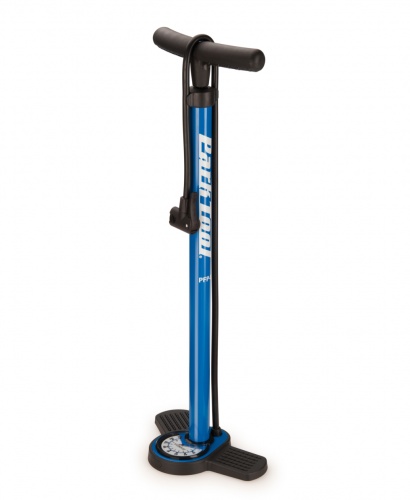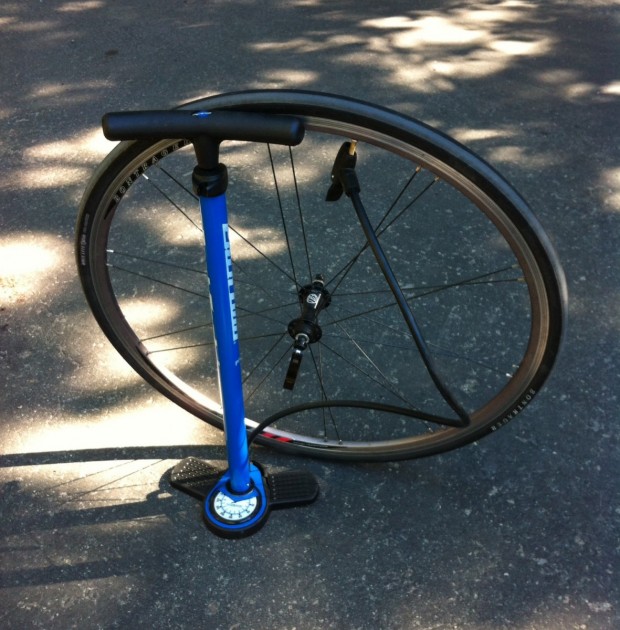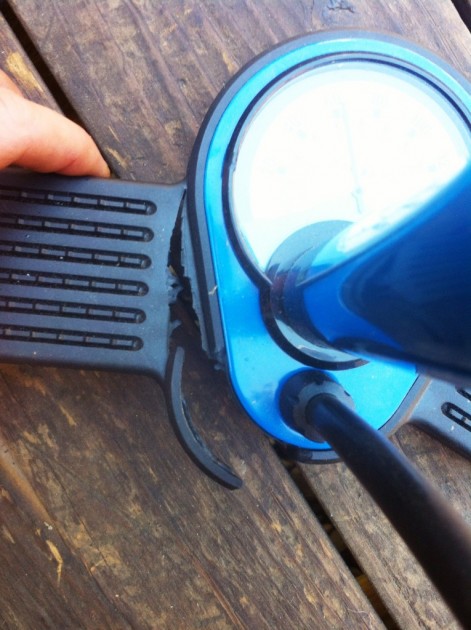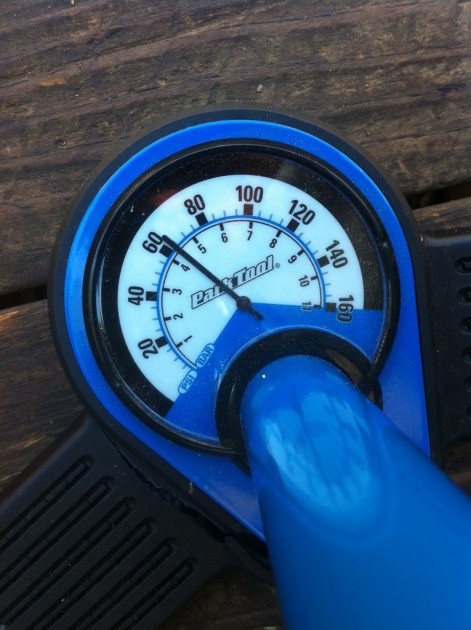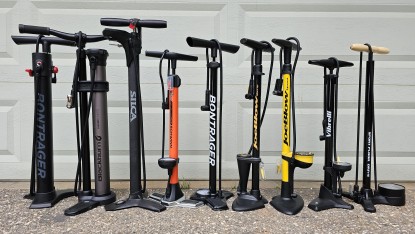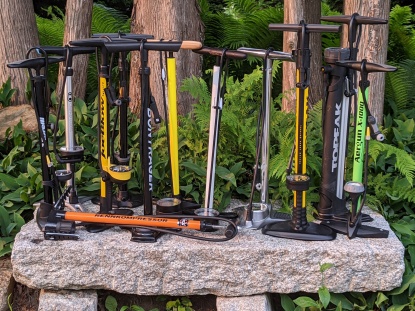Park Tool PFP-8 Review
Our Verdict
Our Analysis and Test Results
Getting air into a tire quickly is one thing this pump did well, but the journey up to that point might not be worth the destination. We often struggled to attach the composite head to the valve stem without leaking or losing excessive amounts of air. If we plan on continuing to use our pump, we'll need to figure out how to retrofit some sort of 2x4 situation to the base since ours broke in half. While we're at it, we might try engineering a new handle to give our wrists a break from the uncomfortable curved design.
Ease of Attachment/Detachment
The head of the PFP 8 was the most difficult in our test to attach. There are separate ports for Presta and Schrader valves; whereas other pumps feature a split head design, this one stacks the two valve ports one atop the other. Each is marked with a P and S for Presta and Schrader, appropriately. Even so, it's simple enough to determine the correct port due to the obvious size differences.
The head slides on tightly to the valve, but given the deep appearance of the head, the valve sits rather shallow in the port. When engaging the locking lever, it proved exceptionally difficult to not pull the head even further off the valve. With the tire on the ground and the valve positioned at the lowest point of rotation, engagement was slightly easier as you are able to maintain firm downward pressure while engaging the lever. If your bike is suspended in a work stand like the Park Tool PCS-10, tires lose considerable air when wrestling this head into place. This was the only pump where the head blew off the valve stem during pumping.Stability
The plastic legs on this stand could benefit by being a tad longer. While plenty wide enough, we felt a bit squished using this pump. Six rows of tiny knobs on the support legs act to keep your shoes from sliding around when standing on them during pumping. The legs are low-profile at about half an inch in height, so you hardly notice them underfoot, with the teardrop shape forming the center of the base, holding the gauge and the hose. Unfortunately, our test pump is no longer stable at all. It only took one “chuck it in the truck” test to shear the base apart. We hesitated to even do this test, as the entire base of the pump is made from a brittle feeling plastic that even on the first impression didn't seem long for this world.
Inflation
The PFP-8 moved the most air in the least amount of time of all the pumps in our test. It took a mere 30 strokes to bring our 27.5" tubeless mountain bike tire from flat to 25psi and was head of the class in our road tire test. The caveat to this was we threw out the many botched attempts at securing the head onto the valve. We consistently lost air while engaging the pump head, thus starting at a lower pressure, requiring more strokes to reach our final pressure. Testers also complained of leakage, as the head unit blew off on a couple of occasions.
Accuracy
This pump read an average of 2.9psi below the pressure on the digital gauge we used for accuracy testing. With the broad gauge needle, perhaps the difference in pressure could be called a wash — since we were guessing at readings within a range of 3psi anyhow.
Gauge
The three-inch gauge is about half an inch larger than most of the other pumps, with the gauge mounted towards the bottom of the pump, making it easier to read from a pumping position. The size of the gauge makes the display less cluttered, but we still aren't crazy about the black print on white background. The needle is unique, as it is the same width for its entire length. Lacking a tapered end, the needle encompasses a broad area between hash intervals representing about 3psi. An accurate reading is more difficult to determine when using this pump.
Value
If this were the least expensive pump in the test, we might consider it a decent value. However, it's not, and our test pump broke on the first toss we gave it. We have tested other bike equipment from Park that we love, largely because of bombproof construction, so we were surprised by the lack of durability of this product.
Conclusion
Despite a reputation for quality, shop-worthy bike tools, we found an exception in the PFP-8 floor pump from Park Tool. The head design tested poorly among the competition, and the plastic base broke early on in the test process. Replacing a head or hose after years of use is one thing, but a broken base renders the pump almost useless.


